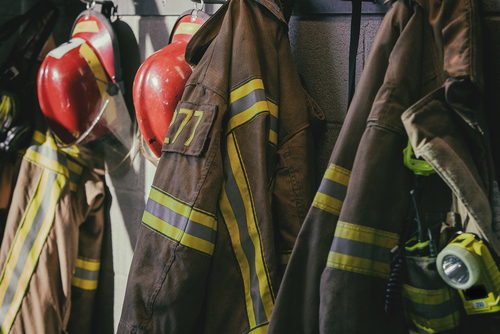
Through introduction of the bipartisan Protecting Firefighters and Advancing State-of-the-Art Alternatives Act (PFAS Alternatives Act), several federal lawmakers recently proposed authorizing $25 million annually through 2028 to support development of new materials, guidance and training for firefighters, related to PFAS chemicals.
“Firefighters are heroes in communities across the nation, and we owe it to them to prioritize their health and safety,” U.S. Rep. Brian Fitzpatrick (R-PA), a leader of the bill, said. “As co-chair of both the PFAS Task Force and the Congressional Fire Services Caucus, I am proud to lead this bipartisan effort to streamline the development of high-quality gear for our firefighters on the frontlines that is free of harmful ‘forever chemicals,’ further protecting them as they engage in high-risk situations to keep our families safe.”
Joined by fellow lawmakers that included U.S. Reps. Sam Graves (R-MO), Tom Kean (R-NJ), Anthony D’Esposito (R-NY), Glenn Ivey (D-MD), Debbie Dingell (D-MI), Dina Titus (D-NV), and Suzanne Bonamici (D-OR), their combined effort is meant to protect firefighters and create the next generation of equipment and practices to that end. Historically, PFAS could not only be an environmental threat, but a part of the actual gear materials at their disposal.
“Firefighters’ jobs are already dangerous enough without worrying about the long-term health risks of being exposed to dangerous PFAS in their turnout gear,” Dingell said. “The PFAS Alternatives Act will remove this unnecessary occupational hazard and help protect firefighters as they work every day to protect us.”
On top of the funding, the bill would therefore promote development of PFAS-free turnout gear through a mix of research, development and testing of proposed materials. These materials would emphasize danger reduction for firefighters’ faces, provide protection against primary and secondary exposure to particulates and byproducts, reduce maintenance necessities, factor body composition in turnout gear design and offer visible warning indicators to alert firefighters to hazardous exposures of decontamination needs.
Beyond the equipment, the bill would also support guidance and training best practices meant to reduce exposure through proper wearing, cleaning and caring of new gear. For any development process, the firefighting industry would need to be involved.

